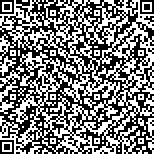王杰,杨诚,卫小梅,等.间歇性θ短阵脉冲刺激对轻度认知障碍合并吞咽障碍患者认知及吞咽功能的影响及机制[J].中华物理医学与康复杂志,2021,43(12):1094-1099
扫码阅读全文

|
| 间歇性θ短阵脉冲刺激对轻度认知障碍合并吞咽障碍患者认知及吞咽功能的影响及机制 |
|
| |
| DOI:10.3760/cma.j.issn.0254-1424.2021.12.009 |
| 中文关键词: 轻度认知障碍 吞咽障碍 功能性磁共振成像 间歇性爆发式脉冲刺激 |
| 英文关键词: Cognitive impairment Dysphagia Functional magnetic resonance imaging Theta burst stimulation |
| 基金项目:国家自然科学基金面上项目(81672256、81972159);广东省自然基金面上项目(2020A1515010881) |
|
| 摘要点击次数: 5336 |
| 全文下载次数: 5779 |
| 中文摘要: |
| 目的 观察前额叶间歇性θ短阵脉冲刺激(iTBS)对轻度认知障碍(MCI)合并吞咽障碍患者认知及吞咽功能的影响,并探讨其可能的神经机制。 方法 选取MCI合并吞咽障碍患者28例,按照随机数字表法将其分为治疗组(17例)和对照组(11例),治疗组1例因个人原因退出,最终入组16例。治疗组给予右侧前额叶背外侧(DLPFC)iTBS刺激,频率50 Hz,刺激强度为右侧拇短展肌静息运动阈值(MT)的80%,对照组给予假刺激,共干预2周。治疗前、后,采用蒙特利尔认知评估量表(MoCA)、连线测试(TMT)、数字广度测试(DST)及Stroop色词测试(SCWT)评估2组患者的认知功能。对2组患者行视频透视吞咽检查(VFSS)检查,记录口腔传送时间(OTT)、舌骨向前位移(HAD)及舌骨向上位移(HSD)等数据。行静息态fMRI检查,对局部脑指标低频振幅(ALFF)、局部一致性(ReHo)以及功能连接(FC)进行计算。 结果 治疗前,2组患者认知及吞咽功能指标比较,差异无统计学意义(P>0.05)。与组内治疗前比较,2组患者MoCA评分升高(P<0.05)。治疗组治疗后MoCA评分[(24.08±4.82)分]较对照组改善明显(P<0.05)。治疗后,2组患者10 ml食物测试的OTT均缩短(P<0.05),且治疗组治疗后10 ml食物测试的OTT改善程度优于对照组(P<0.05)。静息态fMRI分析发现,治疗组患者经iTBS治疗后多个脑区局部兴奋指标及功能连接改变,右侧前楔叶ALFF和ReHo增加,左侧颞中回、左侧额下回眶部、左侧扣带中回ReHo减低,右侧DLPFC同双侧楔叶、右侧扣带中回FC增加。 结论 iTBS刺激右侧DLPFC可以改善MCI合并吞咽障碍患者的整体认知功能和口腔期吞咽功能。脑网络功能重组可能是iTBS改善MCI合并吞咽障碍患者认知及吞咽功能的神经机制之一。 |
| 英文摘要: |
| Objective To observe any effect of intermittent theta burst stimulation (iTBS) of the prefrontal lobe on dysphagia and impaired cognition, and to explore the neural mechanisms involved. Methods Twenty-eight patients with dysphagia and mild cognitive impairment were randomly divided into an iTBS group of 16 and a control group of 11. The iTBS group received 20 minutes of iTBS (2 seconds on and 8 seconds off) of the right dorsal lateral prefrontal cortex (DLPFC) once daily for 2 weeks, with the intensity at 80% of the resting movement threshold of the right abductor pollicis brevis, while the control group was given sham iTBS. Before and after the treatment, both groups′ cognitive functioning was evaluated using the Montreal Cognitive Assessment Scale (MoCA), a trial marking test, a digit span test and a Stroop color word test. Video-fluoroscopy was used to record oral transmission times (OTTs), hyoid bone anterior displacement and hyoid bone upward displacement during swallowing. Resting-state functional magnetic resonance imaging measured the amplitude of low-frequency fluctuation (ALFF), regional homogeneity (ReHo) and functional connectivity in the patients′ brains. Results Before the treatment there was no significant difference in the average indices of cognition or swallowing function between the 2 groups. Afterward the average MoCA score had increased significantly in both groups, with the improvement in the iTBS group significantly greater than that of the controls. Average OTT had shortened significantly in both groups, with significantly greater improvement in the iTBS group. The magnetic resonance imaging showed that after iTBS treatment, local excitation indicators and functional connections in several brain regions had changed. ALFF and ReHo in the right anterior cuneus had increased, ReHo in the left middle temporal gyrus, the orbital region of the left inferior frontal gyrus and the left middle cingulate gyrus had decreased, and functional connectivity in the right DLPFC, the bilateral cuneus and the right middle cingulate gyrus had increased. Conclusions Two weeks of intermittent TBS of the right DLPFC can improve the swallowing and cognition of persons with dysphagia. Functional reorganization of brain networks may be one of the neural mechanisms involved. |
|
查看全文
查看/发表评论 下载PDF阅读器 |
| 关闭 |
|
|
|